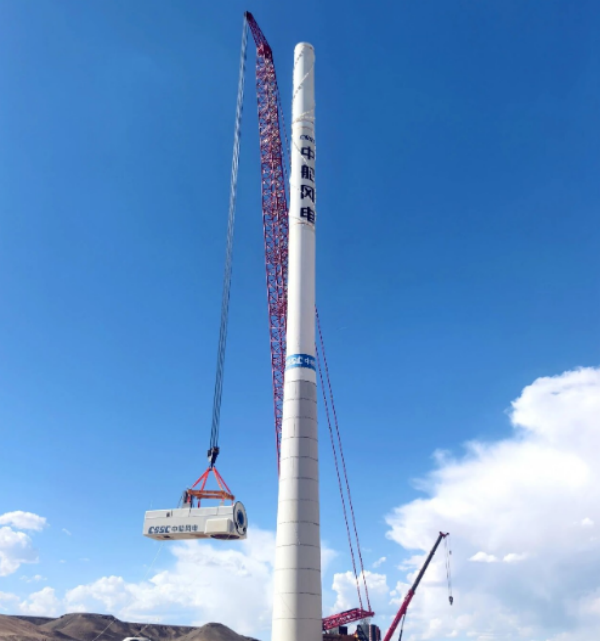CSSC Science & Technology Co., Ltd., a subsidiary of China State Shipbuilding Corporation Limited (CSSC), unveiled its latest structural innovation—the world’s tallest 200-meter-class steel-concrete hybrid tower on October 20.

CSSC Science & Technology Co., Ltd. unveiled the world’s tallest 200-meter-class steel-concrete hybrid tower on October 20. [Photo/sasac.gov.cn]
Specially designed for regions with low wind speeds and high wind shear, this landmark product not only sets a new height record for hybrid towers but also addresses key challenges in wind power development under complex wind conditions.
At present, mainstream hybrid towers in the wind power market stand between 140 and 160 meters. However, as high-quality wind resources become increasingly scarce and turbine capacities continue to expand, ultra-high hybrid towers above 180 meters have become essential for harnessing wind energy in low-speed areas. The 200-meter-class hybrid tower solution directly targets this critical industry need.
The first 200-meter-class hybrid tower will be installed in the Gaoyang Project in Baoding, Hebei Province, in the first quarter of 2026. When matched with an H220-6.25MW turbine, the total height of the wind turbine will exceed 310 meters, providing robust support for wind power development in low wind speed and high wind shear regions.
“Every 10-meter increase in tower height can boost the wind energy capture by 5 to 8 percent. The gains at 200 meters are substantial,” said Li Tao, product manager for CSSC Science & Technology Co., Ltd.’s hybrid tower line.
Taking the Gaoyang Project as an example, increasing the hub height from 160 to 200 meters is expected to raise the turbine’s equivalent full-load hours by 155, improve the return on investment by about 0.5 percentage points, and generate over 300,000 yuan in additional annual power revenue per unit.
The significance of this breakthrough extends far beyond individual project benefits. Comprehensive assessments show that the 200-meter-class hybrid tower solution can enhance the economic viability of low wind speed regions by more than 30 percent, unlocking gigawatt-scale wind resources across central, eastern, and southwestern China that were previously uneconomical to develop.
(Executive editor: Yuan Ting)